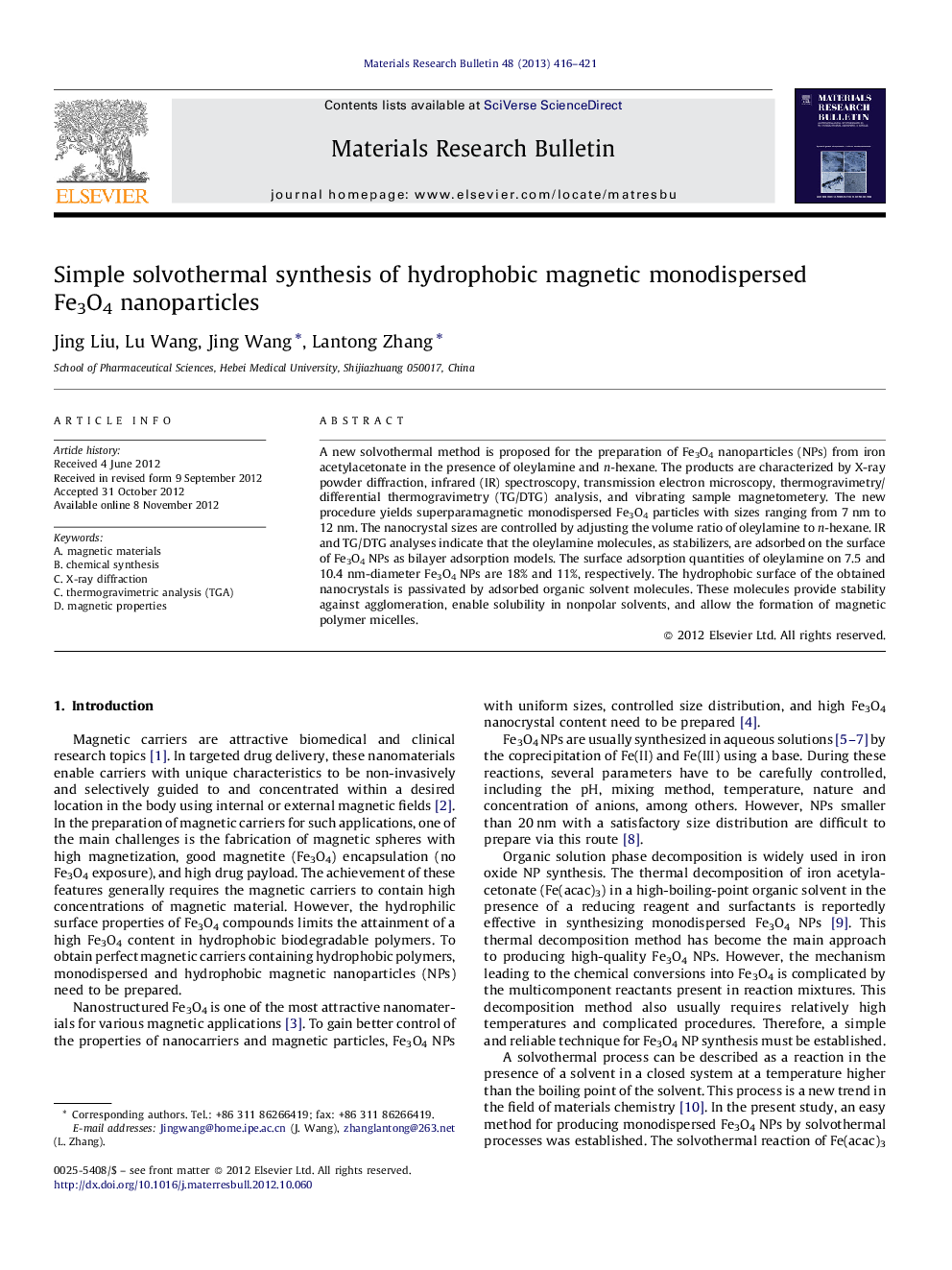| Article ID | Journal | Published Year | Pages | File Type |
|---|---|---|---|---|
| 1489848 | Materials Research Bulletin | 2013 | 6 Pages |
A new solvothermal method is proposed for the preparation of Fe3O4 nanoparticles (NPs) from iron acetylacetonate in the presence of oleylamine and n-hexane. The products are characterized by X-ray powder diffraction, infrared (IR) spectroscopy, transmission electron microscopy, thermogravimetry/differential thermogravimetry (TG/DTG) analysis, and vibrating sample magnetometery. The new procedure yields superparamagnetic monodispersed Fe3O4 particles with sizes ranging from 7 nm to 12 nm. The nanocrystal sizes are controlled by adjusting the volume ratio of oleylamine to n-hexane. IR and TG/DTG analyses indicate that the oleylamine molecules, as stabilizers, are adsorbed on the surface of Fe3O4 NPs as bilayer adsorption models. The surface adsorption quantities of oleylamine on 7.5 and 10.4 nm-diameter Fe3O4 NPs are 18% and 11%, respectively. The hydrophobic surface of the obtained nanocrystals is passivated by adsorbed organic solvent molecules. These molecules provide stability against agglomeration, enable solubility in nonpolar solvents, and allow the formation of magnetic polymer micelles.
Graphical abstractA facile method to produce monodispersed magnetite nanoparticles is based on the solvothermal reaction of iron acetylacetonate (Fe(acac)3) decomposition. The sizes ranged from 7 to 12 nm, which could be controlled by adjusting the volume ratio of oleylamine to n-hexane.Figure optionsDownload full-size imageDownload as PowerPoint slideHighlights► The solvethermal reaction of Fe(acac)3 decomposition was carried out at mild temperature in the presence of oleylamine and n-hexane. ► The size of nanocrystals is controlled by adjusting the volume ratio of oleylamine to n-hexane. ► The low-boiling-point solvent n-hexane offered autogenous pressure parameter after gasified in the reaction temperature. ► The as prepared hydrophobic monodisperse Fe3O4 NPs can be used to prepare the magnetic micelles for future biomedical applications.
